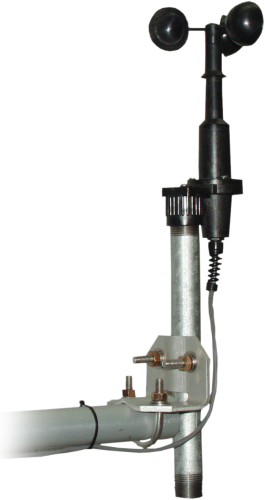The Duty of an Anemometer in Improving Safety And Security for Outdoor Activities
The Duty of an Anemometer in Improving Safety And Security for Outdoor Activities
Blog Article
Anemometers Revealed: Comprehending Their Significance in Environmental Surveillance and Precaution
The duty of anemometers in ecological monitoring and safety procedures is often taken too lightly, yet their importance is obvious. From meteorology to aviation safety and security, anemometers play a crucial duty in supplying precise data that informs decision-making processes and boosts overall security.
History of Anemometers
The advancement of anemometers can be traced back to the ancient people where basic wind determining tools were first used. One of the earliest recognized anemometers was the hemispherical mug anemometer invented by Leon Battista Alberti in the 15th century.
In the 18th century, the distinguished researcher John Thomas Romney Robinson presented the Robinson anemometer, which featured four hemispherical cups mounted on horizontal arms that prolonged from a main axis. This layout became a criterion in meteorological dimensions as a result of its precision and integrity. Over the years, developments in modern technology brought about the development of more modern anemometers, including ultrasonic anemometers and laser Doppler anemometers, offering enhanced precision and efficiency in measuring wind speed and direction. The history of anemometers showcases a remarkable journey of innovation and progress in the field of meteorology.
Types of Anemometers
Throughout the area of meteorology, numerous types of anemometers have been created to accurately gauge wind speed and direction. Sonic anemometers make use of ultrasonic signals to gauge wind rate and direction precisely. Hot-wire anemometers run based on the principle that the cooling result of wind on a heated wire is symmetrical to the wind rate.
Applications in Meteorology
Having actually reviewed the various types of anemometers used in weather forecasting for gauging wind rate and direction, it is important to discover their sensible applications in the area. Anemometers play an essential function in meteorology by supplying real-time and exact information on wind problems (anemometer). Meteorologists make use of anemometers to check wind rate and instructions to forecast weather condition patterns, problem warnings for serious weather events like tornadoes, hurricanes, and tornados, and evaluate weather for aviation safety
In weather forecasting, anemometers aid in comprehending regional and neighborhood wind patterns, which are crucial for anticipating climate adjustments and establishing weather patterns. These devices are additionally utilized in research to study microclimates, city warm islands, and air pollution diffusion. Furthermore, anemometers are employed in farming to enhance plant management techniques, such as irrigation and pesticide application, based upon wind problems.
Significance in Aeronautics Security
An essential facet of making sure aviation safety and security depends on the meticulous tracking of wind conditions utilizing anemometers. Anemometers play an important role in air travel by providing real-time information on wind speed and direction, assisting pilots in making notified choices during trip, take-off, and touchdown. Uncertain and strong winds can dramatically impact airplane procedures, making it important for aeronautics authorities to rely upon precise wind dimensions to make certain the safety of passengers and staff.
:max_bytes(150000):strip_icc()/GettyImages-186864034-58e3355e5f9b58ef7e576b44.jpg)
In the dynamic atmosphere of aeronautics, where even small changes in wind rate and instructions can have profound results, anemometers stand as important devices for advertising protected and secure air travel.
Function in Environmental Research
Exactly how do anemometers add to developments in ecological research? Anemometers play a vital duty in environmental research study by giving vital information on wind rate and direction. This info is essential for understanding different climatic procedures, such as air contamination dispersion, weather condition patterns, and environment adjustment. By accurately measuring wind attributes, anemometers aid scientists analyze the motion of contaminants airborne, analyze the impact of industrial emissions, and forecast the spread of impurities in the atmosphere.


Final Thought
In conclusion, anemometers have actually played a vital function in environmental monitoring and security measures. Understanding the value of anemometers is necessary for precisely measuring wind rate and direction, which is essential for anticipating weather patterns, making sure safe aeronautics see here now operations, and performing environmental researches.
One of the earliest recognized anemometers was the hemispherical mug anemometer developed by Leon Battista Alberti in the 15th century. Over the years, advancements in modern technology led to the development of even more modern anemometers, including ultrasonic anemometers and laser Doppler anemometers, supplying enhanced accuracy and efficiency in gauging wind speed and direction. Hot-wire anemometers run based on the principle that the cooling result of wind on a heated cable is symmetrical to the wind speed. Meteorologists make use of anemometers to keep an eye on wind rate and direction to anticipate weather patterns, problem warnings for extreme weather events like twisters, storms, and storms, and evaluate climatic problems for aeronautics safety.
Understanding the relevance of anemometers is crucial for accurately measuring wind speed and instructions, which is vital for predicting weather condition patterns, making sure secure aeronautics procedures, and conducting environmental studies. (anemometer)
Report this page